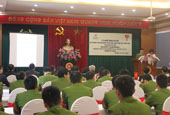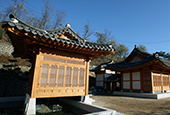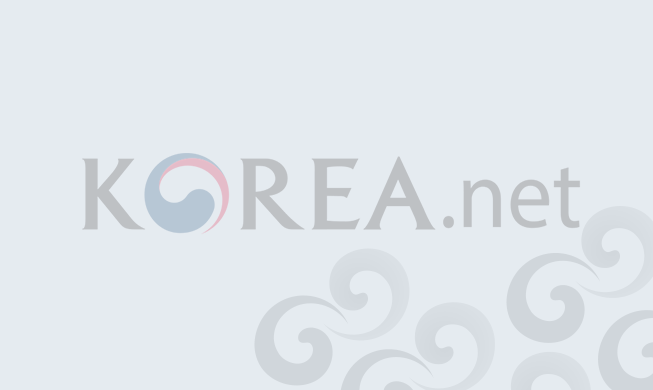Today, however, there are 43 libraries across the district, including five libraries at each of the five subway stations in the district. This allows people to borrow and return books as part of their commute. The district has tried to open enough libraries so that everyone can reach a library within 10 minutes on foot.
The fact that the district came to have so many libraries is attributed to Gwanak District Mayor Yoo Jong-pil. He has held many positions throughout his career, including as a journalist, a spokesman for a political party and as the chief librarian at the National Assembly Library. As district mayor, he has consistently been pushing library policies, stressing welfare through spreading knowledge and by studying the humanities. Yoo was interviewed recently about books and libraries.
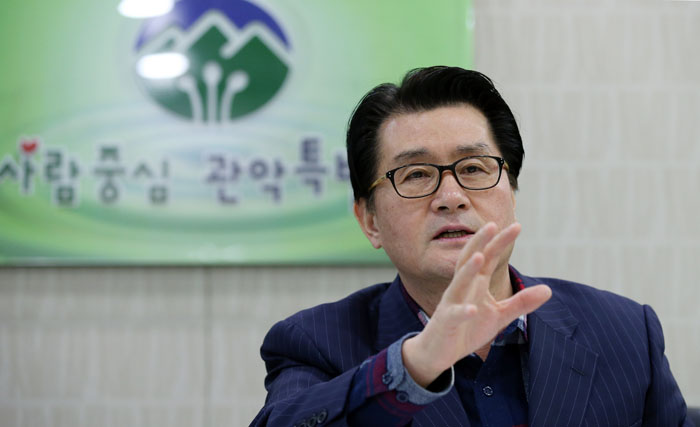
Gwanak District Mayor Yoo Jong-pil leads a 'library revolution' in the district.
- You must have had dreams about libraries. Now you are achieving these dreams. What were your aspirations and dreams behind this library project?
We live in an age of knowledge and information. Knowledge and information are all in books. When I was a child, I was living in the countryside and there weren't many books. I came to read many books after I joined a reading club in high school.
I was also the chief librarian at the National Assembly Library. People don't read books that much these days, and I wanted to help people read more books. If libraries are located very far away, people will not go there.
Thus, I tried to open up more libraries so that everyone can reach one within 10 minutes on foot. Small libraries don't have many books. So, we started delivering books to libraries nearest to the reader, at their request. The so-called "knowledge lunch box" project is now picking up momentum. Last year, 270,000 books were delivered. Three Starex minivans are always on the road and delivering books. There are unmanned libraries at five subway stations across the district where people can borrow and return books at any time.
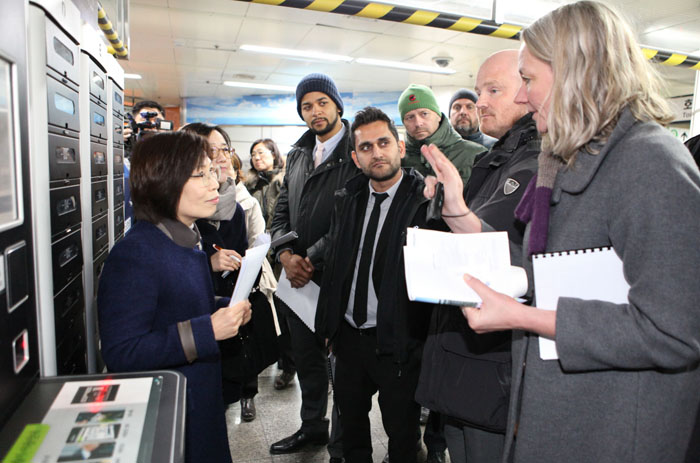
A Danish delegation visits the U-Library, an automated library kiosk, at Seoul National University Station on Line No. 2 in Gwanak District on January 9.
- The Gwanak District library system has become very well known across the world. How did this happen?
It's because there have been many reports in Korean newspapers. Recently, a Danish delegation came by. Those from Russian and Swedish libraries also visited us last year. There were many Japanese visitors, too, including district mayors, education professionals, chief librarians and civic activists. The Tokyo Shimbun and the Chunichi Shimbun also reported about our libraries. There were visitors from Setagaya District, Tokyo. The Setagaya district mayor was elected congressman three times. He is an eccentric person. He used to belong to the Socialist Party, but now he is independent.
- When you were young, you moved to Gwangju to study, from Hampyeong. What kinds of books were you impressed with?
There were a few reading clubs at my high school. The Gwangju Ilgo High School was the origin of student movements in the olden days during the Japanese occupation. There were also a few reading clubs. Later, they led to the anti-colonialism movement. Our reading clubs were based on that tradition. We had discussions on both Korean and international classics. I'm still in touch with the members of those clubs.
I read many books written by Hermann Hesse. One of the themes of his books is that there are both wolf aspects and sheep aspects in the human soul. That's why people always have fights with each other. I was always interested in fundamental problems of human nature. I also read Andre Gide's 'Strait Is the Gate.'
At university, I majored in philosophy and mostly studied the humanities. I did not learn many practical skills, to be honest.
- The number of libraries increased from five to 43 while you have been district mayor. Did it cost a lot of money?
We have not built any new buildings for our libraries. We only use space in existing buildings. We transformed a ticket booth at Gwanaksan Mountain and remodeled "Saemaeul" libraries in community centers and even turned 40-foot containers into libraries. They are the size of a "small library," by legal standards.
The "small library dreaming of dragons," located on the first floor, used to be just office space. Now, there are 1,000 visitors per day and it has been loved by many residents. In particular, all libraries in the district are connected online and this has also helped to overcome their physical size limits of not having many books. The libraries in the district lend each other books when books have been requested by readers and are not available or then they're already on loan. The number of library card holders increased nearly 90 percent, from 73,000 in 2010 to 138,000 recently, and we are getting a great response from the community.
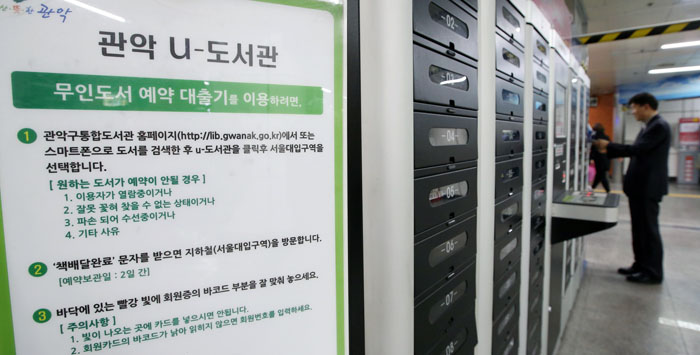
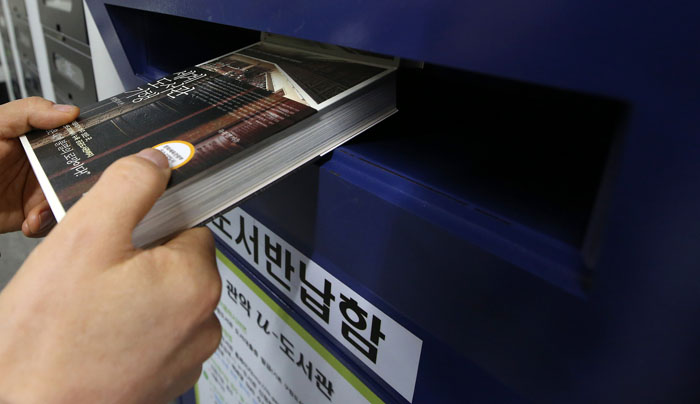
Residents can pick up their books at the U-Library, an automated library kiosk, at the Seoul National University Station on Line No. 2 after requesting their books via smartphone or online.

A Starex minivan delivers books to a reader's nearest library.
- Nowadays, people are interested in practical studies and in instant gains, but knowledge and information actually can bring larger benefits over the long term? When did you become interested in promoting welfare by spreading knowledge?
People have said that, "Knowledge will rule the world," for a long time. Peter Drucker, the father of modern business administration, often talked about knowledge and the information revolution. I was tacitly influenced by him. Knowledge centers on business management. There is nobody who is starving in Korea, but there are many people who don't have access to books or to knowledge because of poverty.
Unlike general welfare that provides food and cash, "knowledge welfare" helps achieve dreams and to promote creativity. We have engaged in various projects to fairly distribute the benefits of knowledge to all our residents.
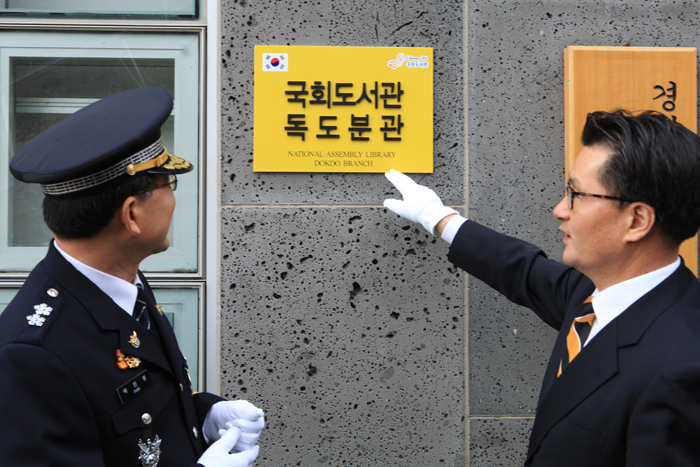
The Dokdo branch is connected to the National Assembly Library's digital sources.
- Gwanak District did not have much infrastructure to help young adolescents get closer to books. It didn't have many libraries, either, which are centers for information. How did you deal with the economic burden when you opened new libraries in Gwanak?
It didn't cost much money because we didn't build any new buildings. We renovated existing buildings, including district offices, neighborhood administrative offices and sports centers. We renovated a ticket booth at Gwanaksan Mountain and turned it into a library. We also remodeled unused 40-foot containers near the Dorimcheon Stream, the Silim Intersection and Nakseongdae Park, and turned them all into libraries.
There are small libraries called Saemaeul libraries in every neighborhood administrative area. We upgraded them to the level of a "small library" with a legally justified floor space, and they were later included in the Gwanak library network. Then, we asked the Saemaeul libraries to run the small libraries. The Saemaeul libraries were initially book clubs and occupied 33 square meters at neighborhood administrative offices. As they became "small libraries" and became part of the Gwanak library network, the number of users greatly increased. They also became like mini post offices to which books can be delivered. Those who run Saemaeul libraries are all volunteers. There is no additional wage paid, so it did not cost much to open the new libraries.
However, there was a lot of criticism that Gwanak District is spending all its money to open new libraries. We could not have withstood the criticism if we hadn't had a solid philosophy. My answer was that, "Libraries can feed people."
Bill Gates has said that it was a small neighborhood library that made him. Andrew Carnegie did not have much schooling, but read many books. Edison said he did not read books but that he read the entire library.
Leonardo Da Vinci failed in applying for a painting job at a cathedral. Then, he read a lot of classics about ancient Greece and Rome. He later produced immortal masterpieces, including many paintings. So when people come up to me and complain, I say that, "Books can feed people."
Some say that "books are for intellectuals" and that there is no use for people from low-income households who have difficulty making ends meet.
There is a couple who shine shoes in front of the Gwanak District Office. They have loads of books in their shop. A female shoe shiner said she couldn't borrow books from libraries when the libraries were located far away. Now, she borrows 20 books per month, as a library has opened nearby and since the books can be delivered. People who deliver yogurt or work at restaurants can now borrow books. They are not aristocrats. They are ordinary people. Books cost more than KRW 10,000. Sometimes it can be a huge burden on some people. People who are not well-off do not starve any longer, but they don't have money to buy books. If I make such comments, even the critics have nothing to say. Those who say that Gwanak District spends too much on building libraries do not read books.
During the last election, other candidates criticized me for spending too much money on libraries. One of my constituents then asked a critical candidate that if Yoo Jong-pil focused on opening new libraries, what would he concentrate on? He did not answer. We need to have a solid philosophy. No matter what you do, there is always criticism. When King Sejong created the Hangeul alphabet, there were more nays then yays. If there weren't Hangeul, there would have been nothing else. There would have been no arts or economy. I try to confront critics with such arguments.
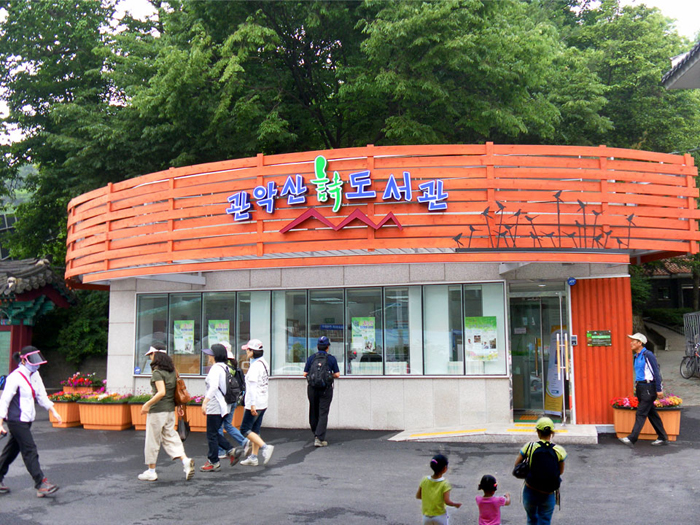
A ticket booth at Gwanaksan Mountain is remodeled into a library.
- How many books do you read per month?
It is hard to say how many books I read per month. I don't read books from beginning to end. Some people ask questions about how to read books. There are nearly 130 kinds of foods at buffets. Diners do not eat every food. When I read a book, I read only the parts I want to read. I read quickly. Sometimes I only read titles or tables of contents for other books. Sometimes, I read only the preface, epilogue or one chapter. People send me books a lot. Usually, I read the table of contents for most of the books I pick up. It's hard to say. I read four books or five books per month, I guess.
- What kinds of books have you read recently? What kinds of books impressed you the most?
I have been impressed with Murakami Haruki's books and Swedish author Jonas Jonasson's "The Hundred Year Old Man Who Climbed Out the Window and Disappeared," as well as "The Illiterate Who Could Count." Sometimes, I read books I read when I was in high school or college. Recently, I re-read George Owell's "Animal Farm." It was fun to read Francoise Sagan's "Bonjour Tristesse" ("Hello Sadness"). A girl who was preparing for her college entrance exam again perfectly described the feelings of a middle-aged women. People even had doubt that there was an original writer.
"The Melancholy of Time: Choi Young-mi's European Diary," published by Changbi Publishers, "To Whoever Will Read My Diary by Chance," and "The Painter's Accidental Gaze." She translated "Francis Bacon in Conversation with Michel Archimbaud" into Korean and a selection of her poems has been translated into English in "Three Poets of Modern Korea."
I generally like poet Choi Young-mi's poetry. I recently read her novel "Bronze Garden." I read her collections of poems "To Pigs," and "Accidental Glance of a Painter" as well as her novels and essays. She studied art. "Accidental Glance of a Painter" is a good book. I read many books about art, architecture and photography.
I also read a lot of Hermann Hesse, a Nobel Prize Laureate in Literature. I was most impressed with "Demian," a book about the personal growth of a young adolescent. A child tries to create his own world and space and tries to seek his true identity through various experiences. There was a touching phrase: "The bird fights its way out of the egg. The egg is the world. Who would be born must first destroy a world."
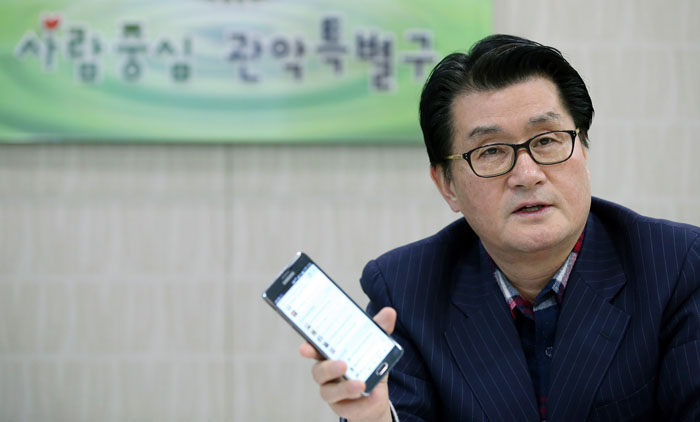
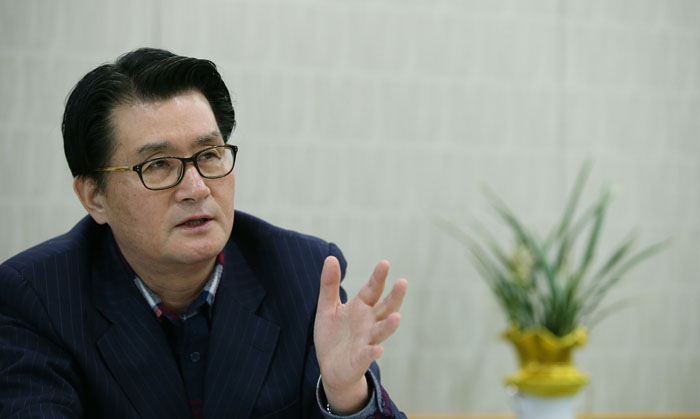
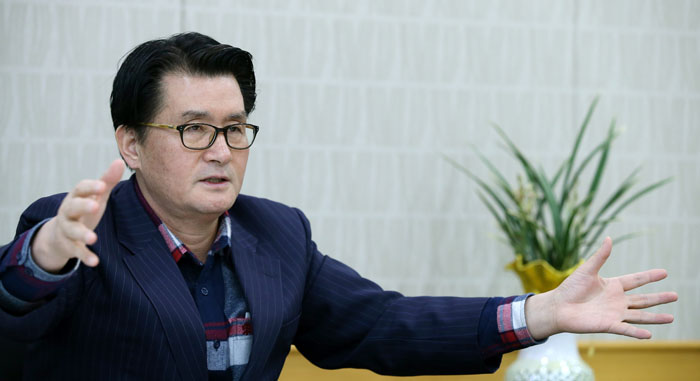
Gwanak District Mayor Yoo Jong-pil has increased the number of libraries from five to 43 by using space in existing buildings across the district.
- When you were the chief librarian at the National Assembly Library, you published a book "Libraries Around the World" after visiting 50 libraries in 14 nations. How did that come about?
People said the chief librarian post at the National Assembly is an easy job. I worked as chief librarian for only one year and five months, and the biggest achievement I had is the book. I also helped open the National Assembly Library's Dokdo branch. Its digital library was connected to Dokdo Island via satellite communications. The Dokdo branch is considered to be one of a kind. The Dokdo branch is the first part of Korea to greet the sun every morning.
I also went to the Library of Congress in Washington, D.C. I went to the New York Public Library and to the Harvard University Library in Boston. The head of the Library of Congress was appointed by President Ronald Reagan. He has been in the position for almost 25 years. There have been changes to the administration many times, but he is still there. He is almost in his mid-80s.
Before I visited the library, I sent detailed letters explaining the kind of information I wanted to get. People at the Library of Congress prepared a lot of information for me. Each department gave a day-long presentation. The Congress Research Service (CRS) is quite famous and it usually prepares detailed information for U.S. congressmen. I also looked around the National Library Service for the Blind and Physically Handicapped.
I wrote columns for a weekly magazine and the columns were well-received. I gave lectures about libraries. I also suggested that I would give such lectures to government officials and business leaders. I also gave lectures at the Sejong Institute and at the U.S. Embassy in Korea. In the past, there was no information about libraries in the former Eastern Bloc, but libraries in Moscow and St. Petersburg are huge.
The National Library in Argentina is also very attractive. Jorge Luis Borges, a giant in Latin literature, had been the chief of the library for 18 years, although he was blind at one point. There was the IFLA World Library and Information Congress held in the library. Many Koreans had been there, but no one had made any record of it. There needed to be some record to pass the information on to the next generation. Recording is a hard job to do. There is the Lighthouse of Knowledge in Curitiba and I also wrote about it in my book.
I also introduced for the first time libraries in Russia, the National Library in China, the Library of Alexandria in Egypt and the National Library in Argentina. The book sold well, too.
In the Naver search engine, there's a column on the Royal Library in Denmark. That library is located near a canal and there are artifacts there that once belonged to Kierkegaard and Andersen. Over 300,000 people have read that online article. I also write a column with the Institute of Humanities at Seoul National University. After they are all published, a book of the articles will be published.
How did you open the U-Library automated library kiosks in Gwanak District?
- We opened a library kiosk at Seoul National University Station in 2011 and it was really popular. So we opened four more. Employees can search for books on their smartphone or online and make their request. They can pick up their books at the U-Library kiosks.
Some 320,000 books, including 160,000 books possessed by the Gwanak Cultural Center, can be borrowed. In 2002, 15,000 books were lent while 50,000 books were lent in 2014.
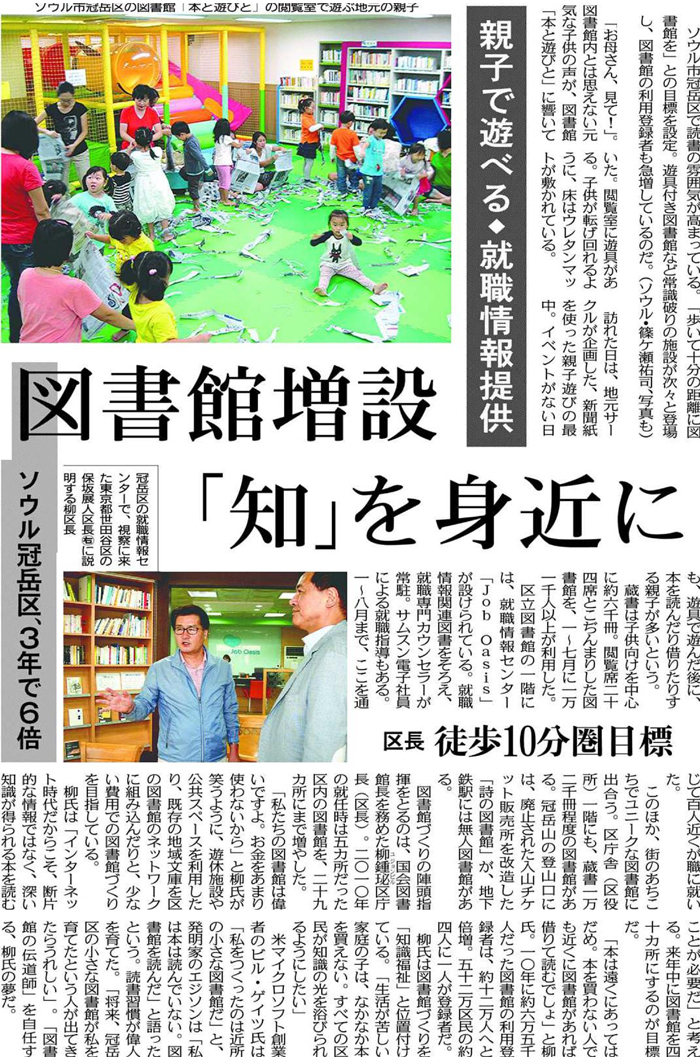
On October 16, 2013, the Tokyo Shimbun writes about Gwanak District's efforts to open more libraries so that residents can reach one within 10 minutes.
- This is your second term. What plans do you have in terms of cultural and lifestyle welfare?
I was recently elected chairman of a national lifelong learning city association. The association consists of 75 educational authorities and 131 regional governments.
Gwanak District is a residential area with little industry. The Ministry of Trade, Industry and Energy designated our district as a "special educational valley," while Seoul City has also named us an "innovative educational district." We are providing educations in literature, arts and sports to children from less affluent families. We are also cooperating with Seoul National University to provide lifelong learning facilities. We now have 123 academic-government cooperation programs, including 90 with Seoul National University.
This year, we also plan to increase the number of lectures on the humanities from two per month, as we did last year, to one per week. Over 10,000 people have attended the lectures. Their satisfaction rate is 90 percent. We hope to improve the quality of life through lectures on the humanities.
It is hard to help raise people's incomes, but it is possible to improve their quality of life. By doing that, we can make people happier. Happiness is the ultimate goal of our life. The level of happiness among people today is very low. According to a U.N. study, the Danish people are the happiest in the world. Rather than competition, we need to create an atmosphere in which we cooperate and care for other people. This is a condition for happiness. No matter how much money one makes, one cannot be happy if he tries to be rich all alone. We can only be happy when other people are happy as well. Jean-Paul Sartre once said that if someone is liberated alone, it is not a real liberation.
- Can the central government benchmark the Gwanak District's efforts to teach the humanities and its U-Library book kiosks?
Villages make up a country and the country is made of villages. It spreads slowly from the villages to an entire country. The central government may try to implement it across the entire country, but it won't work.
By Wi Tack-whan, Limb Jae-un
Korea.net Staff Writers
Photos: Jeon Han, Gwanak District Office, the National Assembly Library
whan23@korea.kr
